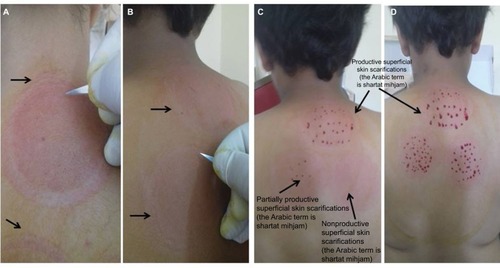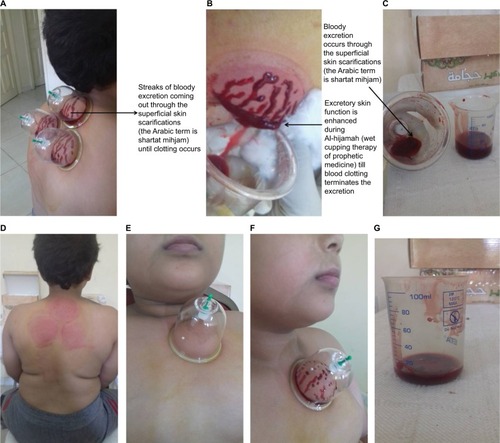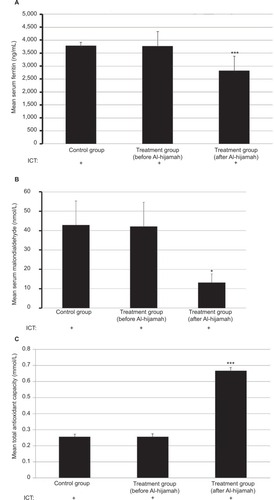Figures & data
Figure 1 Preparation for performing Al-hijamah (wet cupping therapy of prophetic medicine).

Figure 2 Skin scarification step (superficial skin scarifications; the Arabic term is shartat mihjam) to open the intact skin barrier and enhance dermatological excretion. Notes: (A) Line of demarcation of the skin upliftings after removal of the cups of the first sucking step. (B) Handling the scalpel for skin scarification is similar to holding a pen. Scarifications should be superficial scratches. The golden standard when making scarifications is to touch but never cut the skin. (C) Superficial skin scarifications (the Arabic term is shartat mihjam) should be productive to get optimal excretory function and therapeutic benefits after Al-hijamah (wet cupping therapy of prophetic medicine). Superficial skin scarifications (the Arabic term is shartat mihjam) should not be nonproductive or partially productive. (D) Productive shartat mihjam is the Arabic term given to the superficial skin scarifications (~0.1 mm in depth that preserves the structure of the superficial fenestrated dermal capillaries) that are confined to the skin dome (skin uplifting created after the first suction step). Skin scarifications of Al-hijamah denote the hand skills that differentiate one skillful practitioner from another. Skin scarifications should be multiple, longitudinal (~1–2 mm in length, ie, not pinpoint pricks), in parallel rows, equally distributed and productive.

Figure 3 Second suction step is done immediately after skin scarifications.
Abbreviation: ROS, reactive oxygen species.

Figure 4 ICT plus Al-hijamah (wet cupping therapy of prophetic medicine) significantly decreased both serum ferritin and free radicals and improved the antioxidant power.
Abbreviations: ICT, iron chelation therapy; TAC, total antioxidant capacity.

Table S1 Effect of Al-hijamah (wet cupping therapy of prophetic medicine) as an effective PIET in reducing iron overload and oxidative stress with subsequent increase in TAC
